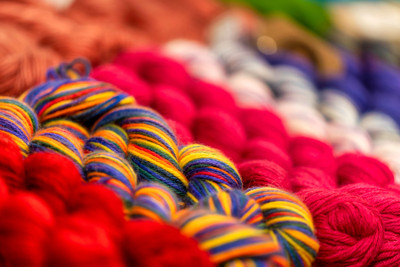Unraveling Why Dye Takes So Well To Alpaca Fiber
Alpaca by Design on Aug 6th 2023
When it comes to natural fibers, alpaca stands out as a true gem. Its luxurious softness, lightweight feel, and superb insulating properties make it highly desirable for various textile applications. One of the most remarkable features of alpaca fiber is its exceptional ability to absorb and retain dye. Unlike many other fibers, alpaca seems to embrace color effortlessly, resulting in vibrant and long-lasting hues. In this blog post, we'll dive into the scientific reasons behind this phenomenon and explore the magic that allows alpaca fiber to take dye so well.
1. Fiber Structure: The Key to Dye Absorption
The primary reason for alpaca fiber's exceptional dyeability lies in its unique structure. Alpaca fibers are composed of a cortex and a medulla, similar to human hair. However, the cortex of alpaca fibers is relatively larger and less dense than that of other animal fibers. This unique arrangement creates abundant sites for dye molecules to penetrate and attach themselves to the fiber. As a result, the dye gets absorbed effectively, leading to rich and vibrant color saturation.
2. Porosity: A Blessing for Dye Molecules
Alpaca fibers possess natural porosity, which plays a significant role in dye absorption. The fiber's porous nature allows dye molecules to infiltrate the fiber matrix and interact with the chromophores present in the dye. Chromophores are responsible for the color of a substance, and they readily bond with the amino acids in alpaca fibers, forming a strong and durable color attachment.
3. Surface Area and Fineness
The larger the surface area of a fiber, the more dye it can hold. Alpaca fibers boast a significantly larger surface area compared to other animal fibers, such as sheep's wool, due to their unique structure and fineness. The higher surface area provides more binding sites for dye molecules, facilitating better dye penetration and color retention. The fineness of alpaca fiber also contributes to its dyeability, as finer fibers offer more opportunities for dye molecules to interact and bond effectively.
4. Lack of Lanolin: A Clear Advantage
Sheep's wool is known for containing lanolin, a natural oil that acts as a water repellent. While lanolin has its benefits, it also hinders dye absorption. Alpaca fiber, on the other hand, lacks lanolin, making it inherently more receptive to dyes. Without the interference of lanolin, dye molecules can freely interact with the fiber's surface and penetrate the inner structure, resulting in brilliant and consistent colors.
5. pH Level and Dye Chemistry
Another crucial aspect influencing dye uptake in alpaca fibers is the pH level of the dye bath. Alpaca fiber tends to be more alkaline in nature, which helps create an environment conducive to dye absorption. Acid dyes are most commonly used for alpaca fibers, as they bond effectively with the fiber's amino acid groups. The dyeing process involves carefully balancing the pH level of the dye bath to ensure optimal color uptake and fixation.
In conclusion, the exceptional dyeability of alpaca fiber can be attributed to its unique structure, porosity, surface area, fineness, and lack of lanolin. These factors combine to create a perfect canvas for dye molecules to bond with the fiber, resulting in vivid and long-lasting colors that retain their brilliance over time. The magic of alpaca fiber lies not only in its inherent qualities but also in the artistry of dyeing, which celebrates this magnificent fiber's potential to showcase a kaleidoscope of colors.
Whether used in fashion, home textiles, or artistic endeavors, alpaca fiber's ability to take dye so well continues to captivate designers, artisans, and consumers worldwide, making it a cherished and sought-after material in the textile industry. As we delve deeper into the world of natural fibers, we are continually reminded of the wonders of nature and the remarkable properties that make each fiber unique in its own right.

